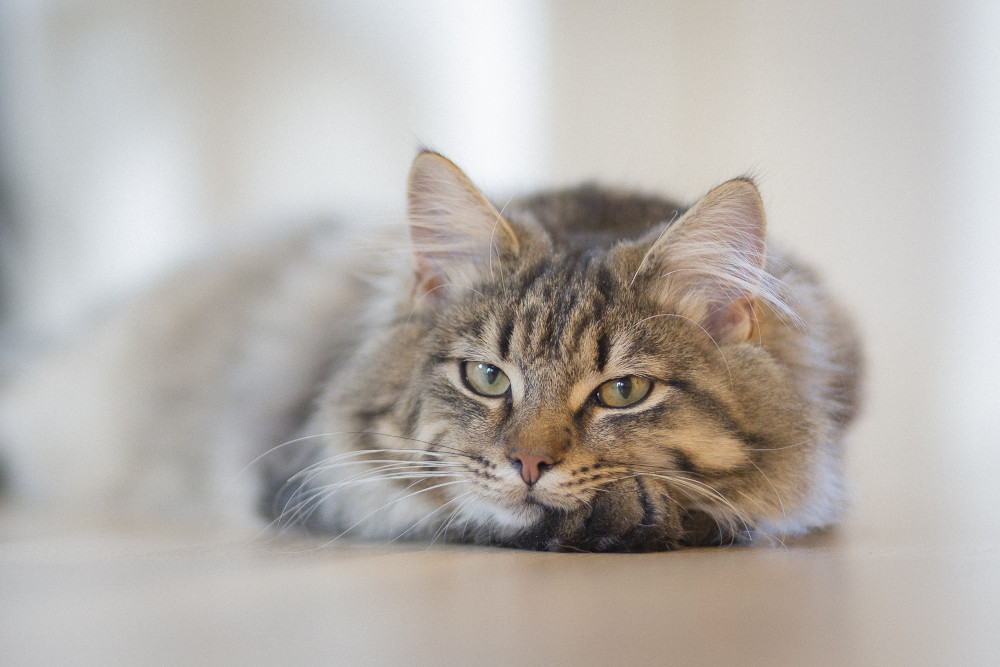Should I get another cat to provide company for my cat?

All cats are individuals and the way cats relate to one another varies – some cats enjoy the company of other cats, and some cats prefer not to interact with or have other cats around.
How well a cat manages with/without other cats in the household can be influenced by a range of factors associated with:
- The owner (e.g., demographics, experience caring for cats)
- The cat (e.g., genetics, age, sex, desexed/entire, personality, previous living situation, individual sociability)
- The environment (e.g., space, resource availability)
- Husbandry (e.g., socialisation, play, enrichment, feeding routine, number of litter trays)
Having other cats living in the same space is often a significant cause of stress for cats. The impact of this can be minimised by providing each of them with multiple and separated essential resources, but there may still be tension between cats, and this can contribute to poor mental and physical wellbeing and unwanted behaviours like inappropriate toileting/spraying.
Interact tension is a very common cause of stress and distress for cats and so the decision to get another cat needs very careful consideration. Your cat may actually prefer to be an only cat! You can find detailed information about intercat tension here.
Firstly, it is important to carefully consider the needs of your existing cat when thinking about adding a new feline family member. For example, does your current cat have any health or behavioural concerns that might be negatively affected by the introduction of a new cat or that might make the successful integration of a new cat less likely? It is a good idea to discuss the potential introduction of a new cat with your veterinarian who knows your existing cat and can help you consider what is in their best interests.
It is also important to assess if you will be able to meet the needs of all the cats in your household, including the new cat. There are five pillars of a healthy feline environment that need to be considered and optimised to help your cat(s) be as physically and mentally healthy as they can be:
- Provide a safe place
- Provide multiple and separated key environmental resources
- Provide opportunity for play and predatory behaviour
- Provide consistent and predictable human-cat social interaction
- Provide an environment that respects the importance of the cat’s sense of smell and other senses
You can find more information here about the five pillars and how to create a cat-friendly environment. There are special considerations involved for multi-cat households; you can find more information on that here.
If you have considered these factors and feel that your cat would prefer having feline company, you may consider welcoming another cat into your household.
Selecting a new cat
If you have decided to welcome another cat into your household, consider fostering or adopting as there are many animals who need homes.
Cats can adjust to living together with gradual and careful introduction, and a good environment and husbandry (see above) but a harmonious multi-cat household is by no means guaranteed,
Think about what would make a new cat a good match for your current cat. For example, if your existing cat has a low play drive, getting another cat who has a high play drive, may be more likely to result in intercat tension. Ask your veterinarian for advice.
Gradual introduction
If you do decide to add a new feline family member, make sure the cats are introduced in a way that maximises the chance of a successful and happy multi-cat home; but keep in mind that a harmonious multi-cat household is not guaranteed. The introduction of another cat can result in intercat tension which can negatively impact the wellbeing of all cats in the household.
To maximise the chance that unfamiliar cats will get along, it is important to prepare an environment that will meet the needs of all the cats and introduce the cats gradually, step by step.
Rushing the process or ignoring tension between the cats can result in long-term tension and negative welfare impacts.
Good husbandry
To maximise the chance that cats will thrive together in the same household, it is necessary to practice good husbandry and make sure they have an environment that meets their physical and mental needs.
Provide all cats with opportunities to engage in natural behaviours (e.g., scratching posts, climbing frames, elevated resting areas, hiding places), and physical and mentally stimulating activities (e.g., interesting smells, play, puzzles). These activities are not only fun but are also essential for cats’ physical and mental health and wellbeing.
Providing each cat with a quiet, private, safe space to toilet is also critical for their health and welfare particularly in multi-cat households. One litter tray per cat plus an additional tray in separate locations is vital.
Bibliography
Clark C (2016) Dealing with multi-cat households: management and treatment strategies. Companion Animal 21:68–74
Ellis SLH, Rodan I, Carney HC, Heath S, Rochlitz I, Shearburn LD, Sundahl E, Westropp JL (2013) AAFP and ISFM Feline Environmental Needs Guidelines. J Feline Med Surg 15:219–230
Finka LR, Foreman-Worsley R (2022) Are multi-cat homes more stressful? A critical review of the evidence associated with cat group size and wellbeing. J Feline Med Surg 24:65–76
Horowitz D, Pike A (2016) Introducing a New Cat into a Household. Feline Behavioural Health and Welfare
Horowitz D, Pike A (2016) Should I Adopt Another Cat? Feline Behavioural Health and Welfare
Ley JM (2016) Normal social behaviour. Feline Behavioural Health and Welfare
Rodan I, Ramos D, Carney H, DePorter T, Horwitz DF, Mills D, Vitale K (2024) 2024 AAFP intercat tension guidelines: recognition, prevention and management. J Feline Med Surg 26: 1-30
Was this article helpful?
This work is licensed under a Creative Commons Attribution-NonCommercial-NoDerivatives 4.0 International License.


